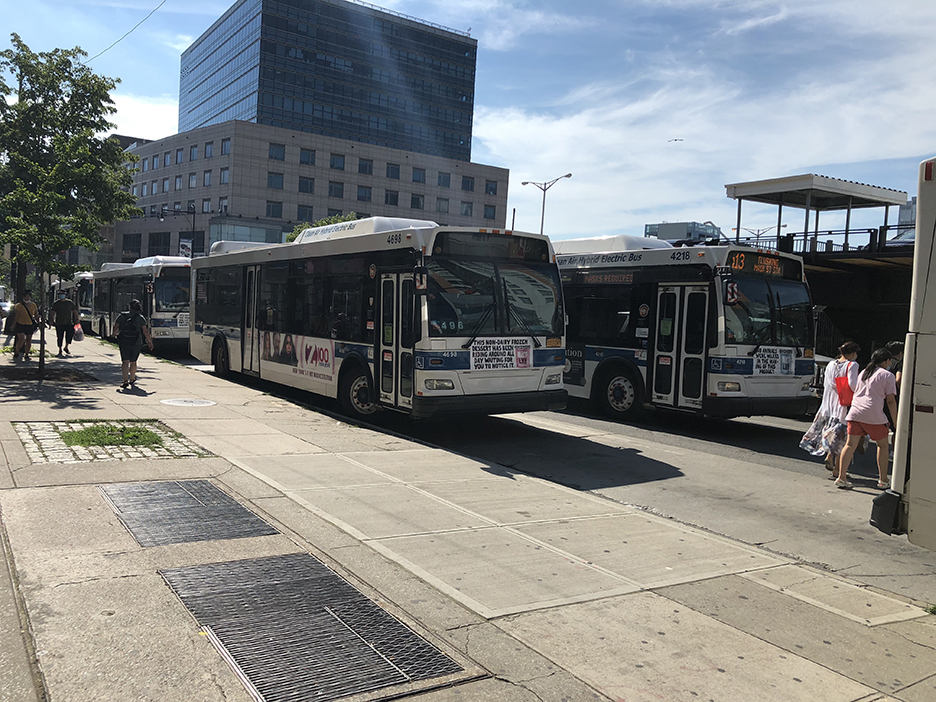Viewpoints
Adjusting to Re-opened Public Transit
By Karen Zhang
Spectrum staff
As New York City continues to rebound from being an epicenter of the Covid-19 pandemic, public transit also is revving up again.
As it maintains safety protocols to prevent the spread of the virus, the Metropolitan Transit Authority is scaling up service to accommodate returning riders and riders who are changing the ways that they travel. For the first time, more people are choosing buses over subways.
For some riders, that is a problem.
“Most of the time, I end up seeing lots of buses with lots of people not really adhering to social distancing. And that makes me avoid the buses as much as I can because I do not want to be bringing Covid-19 back home,” said Andy Lin, 16, a Stuyvesant High School junior who lives in Washington Heights.
He is biking a lot more, and taking buses about once every two weeks. He used to be what he describes as a frequent user of public transit. For Lin, subways and buses aren’t just vehicles for getting where he has to go. Riding also has been a hobby and form of recreation for him. He misses the sheer enjoyment of that.
“When Covid-19 was peaking, about April and May, I did not take public transportation at all and I did not take it recreationally at all,” he said. “I had to do other stuff, and schoolwork, instead of having the freedom to take public transportation whenever I wanted.”
According to The New York Times, the average daily ridership on buses in June 2020 was 830,000, while 752,000 people took the subways.
To keep riders from getting too close to drivers when they board the bus, currently, riders do not have to swipe their fare cards. Passengers only board from the rear, not up front near the drivers — at a time when several MTA workers have died from Covid-19. The MTA also installed vinyl curtains on buses to further protect bus operators from riders. Even if they refuse to, riders, officially, are required to wear masks
Eveline Lisovenko, 15, a Brooklyn Technical High School sophomore from Midwood, said busses she usually takes are less crowded than they were before the pandemic. It makes her feel more comfortable about taking public transit more frequently.
“I only started [riding] a month ago, since things are opening up,” she said. “I feel safer doing it. Even though there’s way more people outside, there’s still not that many people on trains and buses. So, you can still stay far away from people.”
Similar to Lin, Lisovenko is biking more often now, especially with friends, whose parents have forbidden them to ride public transportation.
Some people are forced to take some form of transportation to jobs that they need and their families rely on. Luis, 37, who would not give his last name, finds the busses to be running late. And that frustrates him.
“Sometimes, I’m going to be late to work if I don’t take the taxi,” he said while waiting for the Q17 on Main Street in Flushing. “One day, it might come at 9:25. The next day, it won’t come at 9:25. It comes at 9:35.”
Lateness is not the only challenge now facing public transit riders, conductors, drivers and others. Although government officials have mandated mask-wearing, many passengers are breaking that rule.
High school student Lin hopes that changes: “I really hope that the MTA can start better enforcing people to wear masks because there’s still way too many people that aren’t wearing masks.”
Student Lisovenko noted that the MTA also has launched “Operation Respect,” a campaign to remind writers to wear masks and socially distance themselves from each other. It includes bright yellow signs, showing how to properly wear a mask and where to ask for a mask. But it doesn’t go far enough.
“Something we can do to change is put up more signs,” she said. “Because they’re all over the trains … I haven’t seen any of those on the busses.”


